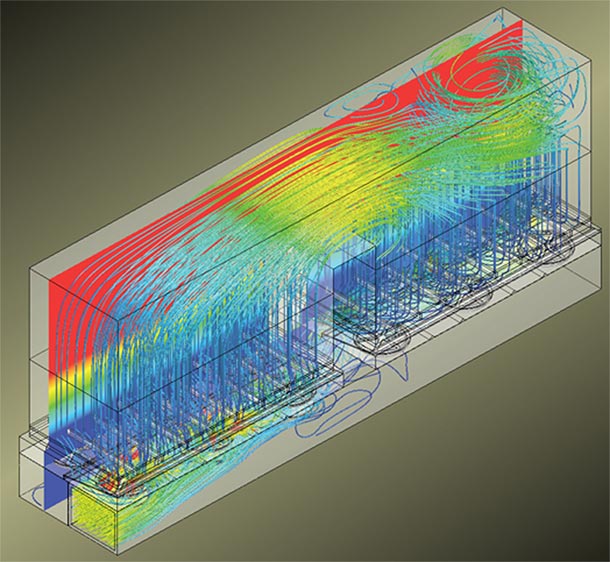Client Profile.
A leading European manufacturer and supplier of industrial air pollution control systems and energy recovery systems. Over 30 years, the company had established a global footprint, delivering over 3,000 thermal oxidizer systems of various types to customers in five continents.
Business Need.
The client was looking for expert providers of CFD simulation studies to check the performance of a two-chamber Regenerative Thermal Oxidizer (RTO) system, which was custom designed for an Asian customer.
The requirement was to study the RTO design to simulate and analyze flow distribution and thermal efficiency, and propose design improvements as to dimensions and materials of the regenerative beds.
Challenges.
- A porous inserted regenerative thermal oxidizer and presence of ceramic foams demanded a lot of data to examine the performance characteristics such as pressure drop, temperature distribution, etc.
- Developing the model required that we work out numerous parameters influencing flow behavior and thermal efficiency.
- Evaluating material selection and appropriate dimensions for regenerative beds demanded calculations and simulations based on a lot of scenarios.
Technology.
ANSYS Fluent, ANSYS Design Modeler
Solution.
Detailed CFD Analysis Report
- Including detailed reports with snapshots of images, simulation videos and calculations.
- The key points detailed include pressure drop, temperature distributions, emissions and thermal efficiency.
- Design recommendations proposed for ceramic material and bed length that offered the best results in the context of the client’s customer site.
Approach.
Developed a 3D model and performed meshing of the RTO using ANSYS Design Modeler
- Based on a checklist of specifications, which was created after studying the documents sent by the client, including all technical specifications, images, previous models, and the client’s customer site requirements.
- Developing high quality structure meshes to ensure fine meshing at critical regions.
CFD Simulations, calculations to verify model accuracy
- Based on data from client on temperature distribution and profiles inside the RTO during a cycle at steady state, and the physical and geometrical properties of the beds.
CFD simulations, calculations and analysis of velocity and temperature fields inside the RTO
- To check uniform distribution of velocity and temperature within the beds.
CFD simulations, calculations and analysis of air volume, VOC concentrations, and valve switching times
- This included using data from customer site conditions, – air stream quantity, velocity, methane concentration, etc.
- Performing simulations based on calculations for different scenarios.
- Checking effects on the beds (under different geometry /dimensions).
- Checking effects on inlet / outlet temperature and the thermal efficiency changes.


